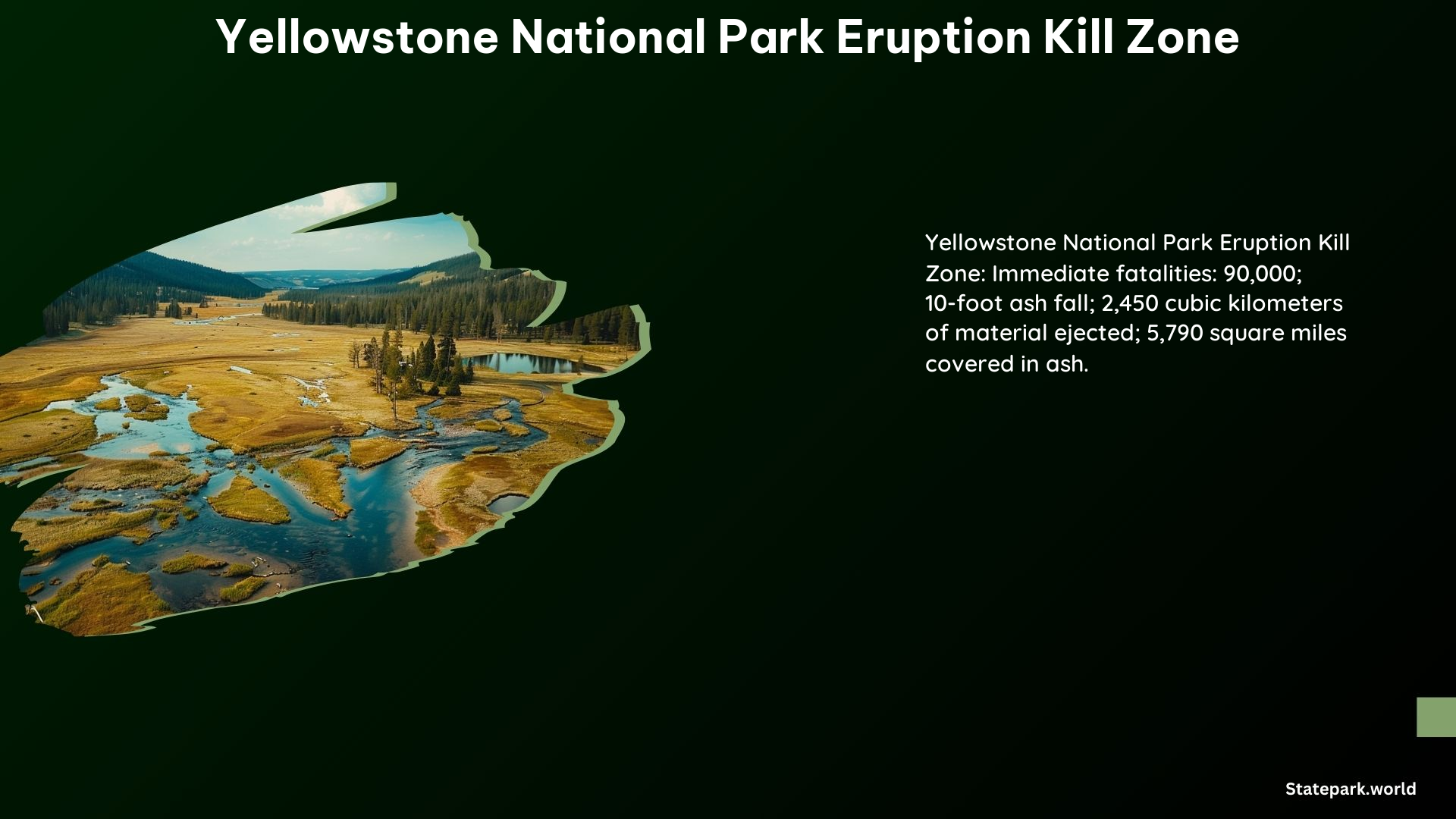The Yellowstone National Park eruption kill zone refers to the area surrounding the park that would be severely affected in the event of a massive eruption from the Yellowstone supervolcano. This zone is characterized by the potential for widespread destruction, loss of life, and significant environmental impacts that would be felt for years to come.
The Potential Impact of a Yellowstone Eruption
A Yellowstone supervolcano eruption could have catastrophic consequences for the surrounding regions. Scientists estimate that such an event could:
- Spew ash across vast regions of the United States, causing severe damage to infrastructure, agriculture, and utilities.
- Kill as many as 90,000 people immediately, with the potential for even more casualties in the aftermath.
- Spread a 10-foot layer of ash over a significant area, burying entire communities and disrupting transportation and communication networks.
The sheer scale of the potential destruction is truly staggering, and the impact would be felt far beyond the immediate vicinity of the park.
Defining the Kill Zone

The kill zone is the area closest to the Yellowstone supervolcano, where the impact of an eruption would be most severe. This zone is characterized by the threat of:
- Ash fall: The massive amounts of volcanic ash ejected during an eruption would bury everything in its path, making the area uninhabitable.
- Pyroclastic flows: These high-speed, ground-hugging flows of superheated gas and rock would incinerate everything in their path, leaving no survivors.
- Toxic gases: The eruption would release large quantities of sulfur dioxide, carbon dioxide, and other harmful gases, posing a significant threat to human and animal life.
The extent of the kill zone is difficult to predict with certainty, as it would depend on the size and nature of the eruption. However, scientists estimate that the most severely affected area could extend for hundreds of miles around the Yellowstone caldera.
Scientific Monitoring and Preparedness
Scientists closely monitor the Yellowstone supervolcano’s activity, tracking a variety of indicators to detect any signs of an impending eruption. These include:
- Earthquakes: Increased seismic activity can be a precursor to volcanic unrest.
- Ground deformation: Changes in the shape of the land can signal the movement of magma beneath the surface.
- Tilt: Measurements of the ground’s tilt can provide insights into the pressurization of the magma chamber.
- Temperature: Monitoring the temperature of the geothermal features in the park can reveal changes in the underlying system.
- Geothermal discharge: Tracking the volume and composition of the park’s geothermal features can help identify any changes in the volcanic system.
Despite the ominous nature of a potential Yellowstone eruption, the scientific community generally agrees that the likelihood of a massive “super-eruption” is minimal. In fact, some experts believe that such a colossal event may never happen again, as the supervolcano’s activity has been relatively stable in recent geological history.
Historical Context and Eruption Likelihood
Yellowstone has experienced three massive eruptions in Earth’s history, with the most recent one occurring 664,000 years ago. These eruptions were among the largest volcanic events in the planet’s history, ejecting vast quantities of ash and gas into the atmosphere and causing widespread environmental changes.
However, the scientific consensus is that the chances of a Yellowstone super-eruption in the near future are extremely low. While the supervolcano is closely monitored, and the potential for a smaller eruption cannot be ruled out, there is no compelling evidence to suggest an imminent “super-eruption” that would devastate the surrounding areas.
Conclusion
The Yellowstone National Park eruption kill zone is a sobering reminder of the potential power of the Yellowstone supervolcano. While the likelihood of a massive eruption may be low, the potential consequences are truly staggering. By understanding the risks and the ongoing scientific efforts to monitor the volcano, we can better prepare for the unlikely event of a catastrophic eruption and work to mitigate its impact on the surrounding communities.
References:
- https://www.vox.com/2014/9/5/6108169/yellowstone-supervolcano-eruption
- https://science.howstuffworks.com/science-vs-myth/what-if/what-if-yellowstone-supervolcano-erupted.htm
- https://www.reddit.com/r/MapPorn/comments/ixq7xb/possible_yellowstone_volcano_eruption_zones/
- https://www.usgs.gov/faqs/what-would-happen-if-a-supervolcano-eruption-occurred-again-in-yellowstone
- https://www.yellowstone.org/yellowstone-supervolcano-revealed/
